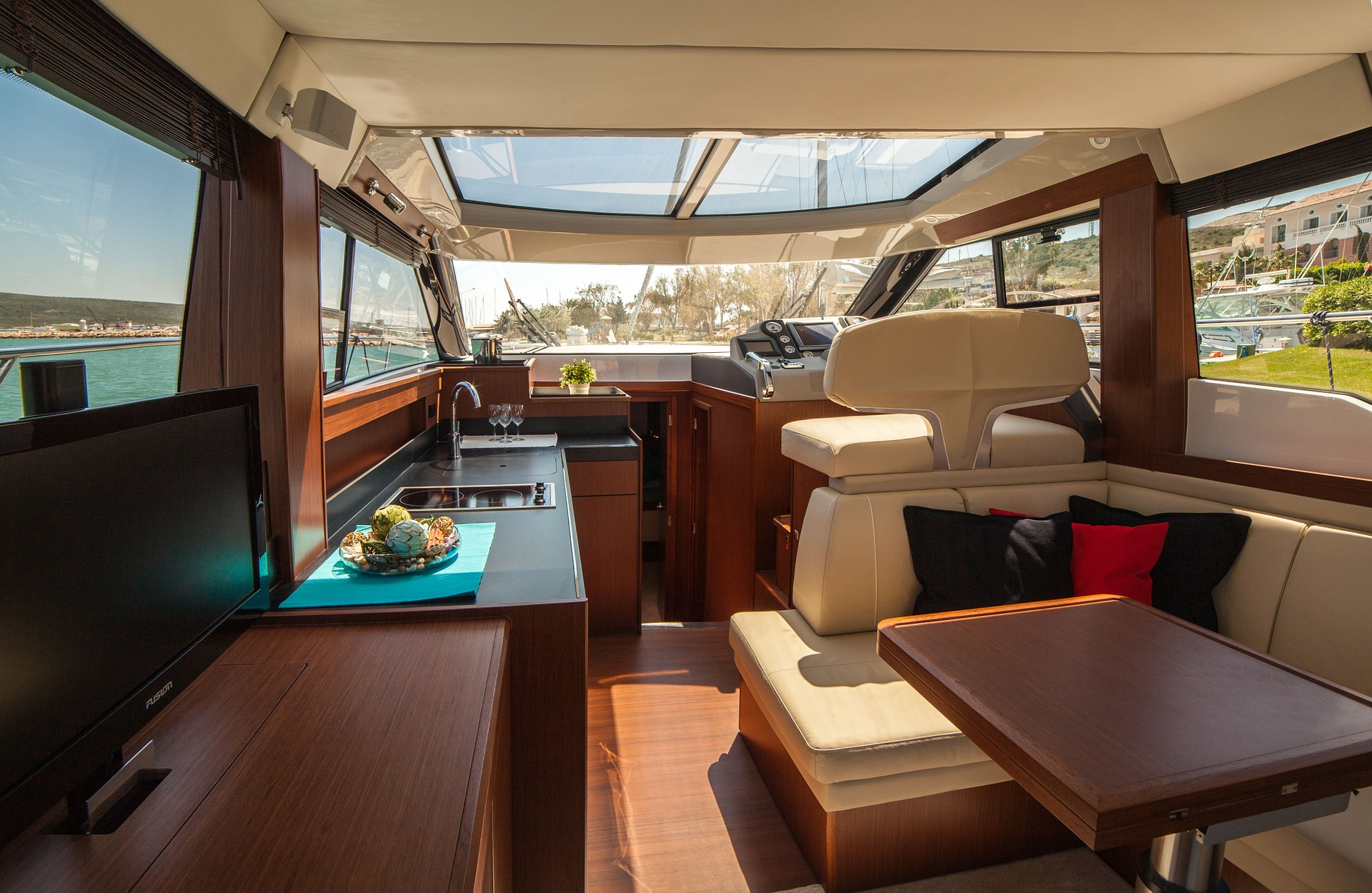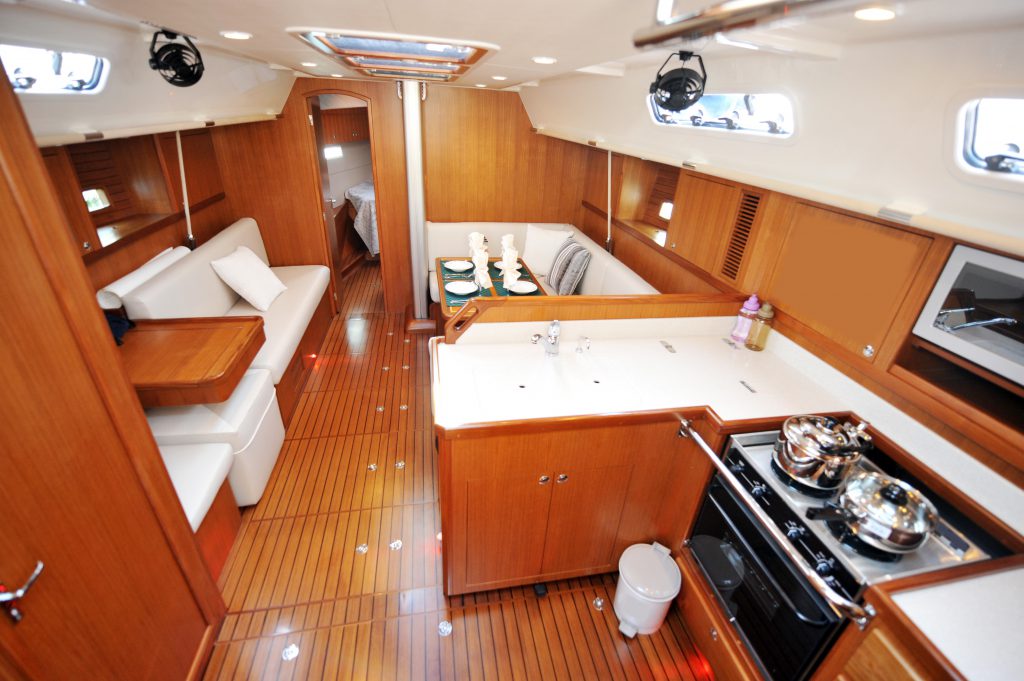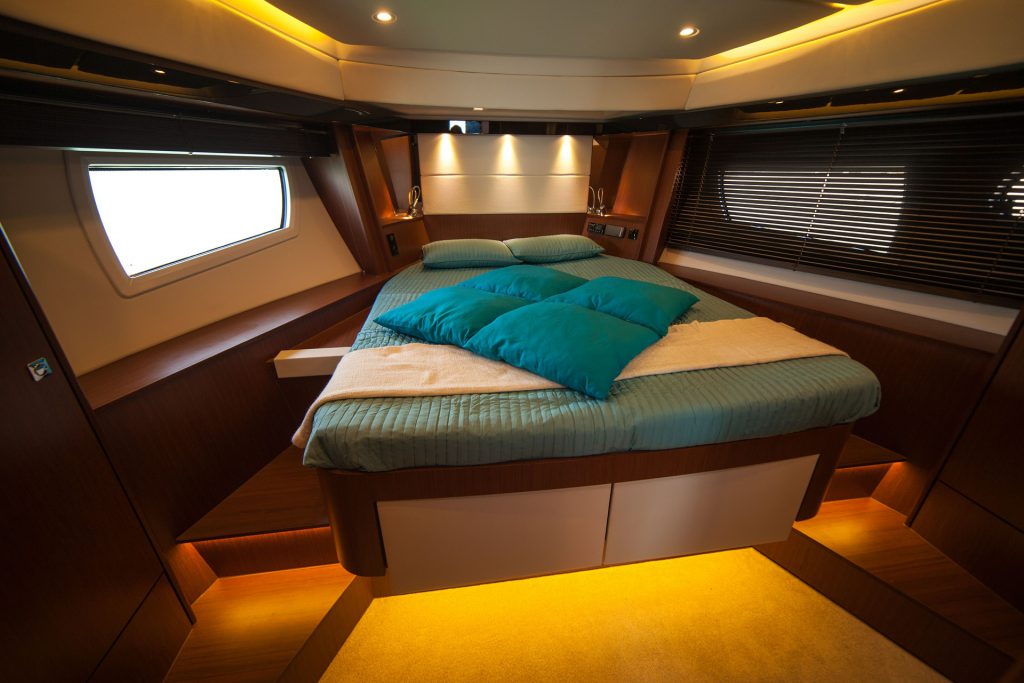More Things to Check When Buying a Used Boat (part 3)
October 8th, 2020 by team

by B.J. Porter (Contributing Editor)
Read Part I, Part II, and Part IV of buying a used boat.
Next in our series on checks for buying a new-to-you boat, we’ll delve into some of the boat’s comfort systems. Your survey should check all these systems in some detail. But when you view the boat you can, with a little visual and olfactory inspection and a few well-placed questions, save yourself some troubles .
Household Systems

Household systems are easy to pass over when you’re taking in the first overall look at a boat. And on your first visit to a boat, it’s not so easy to look behind the scenes, since lifting cushions and opening panels isn’t usually a “first showing” protocol. What you can’t see, you can at least ask about.
Fresh Water
Many people don’t drink the water on their boats, they only use it for washing up. It’s a good idea to ask about this, how the seller uses the fresh water and why.
If you can see tanks and lines, you want to look for two things: leaks and crud. Dirt and containments in freshwater systems are the usual reason the water may taste “funny” and not be drinkable or useful for cooking. Tanks can be cleaned (or replaced) if they are nasty, as can plumbing and hoses, but you want to know what you’re getting into if you hope to carry potable water in your house systems.
Galley Equipment
Stoves and ovens should be clean and in good repair without visible corrosion. Ask about the fuel used, and where it is stored.
My boat has a propane locker, but it took small and expensive tanks. Before I bought it, the seller had re-plumbed the tanks to the aft lazarette where he could store more fuel in cheap, standard steel tanks. But it was an unsafe location, and I had to rework the plumbing and get marine appropriate tanks to make it safe. I knew about it from the survey, but was another project that set me back a few hundred bucks and my insurance company wanted done.
Propane systems should have a solenoid, and there should be a gas sensor in the bilge.
Open up refrigerators and freezers and try to envision using them. Top loading fridges are the most energy efficient, but some people may struggle to reach to the bottom. Cold spaces shouldn’t have visible mold or mildew and have no strong odors, though a faint smell of “closed fridge” is hard to avoid on a closed up boat.
Ask about the practicality of using the installed systems, too. We had a boat with a small plate freezer like you’d find in a college dorm fridge. It could make a rack of ice cubes (eventually) or keep a box of peas frozen…we didn’t use it much. You can learn a lot from how the seller has used the boat.
Heads & Plumbing
Aside from a visual inspection and a quick sniff of the head, you won’t get a close look into the plumbing in an initial viewing. But try to get a sense of the age of the head – look for yellowing of plastic and wearing of parts.
Septic odors should be discussed. If you smell something, ask about the last time they changed the hoses. That’s the most common cause of head odors.
Cooling (and Heating)
Many smaller boats will have fans in them, and larger boats may have air conditioning. If you’re in a cold climate, there may even be a heating system.
As you inspect the boat, look for placement of these things – where are the fans and the vents? How does the boat feel with the hatches open? Unless it’s winter, most brokers and savvy sellers will open them for you.
The savvy seller will also have the A/C running in a hot climate, but you want to know how the cooling is you can use at anchor. I installed seven new fans (at $85 each) on our boat after we bought it because we didn’t want to run the generator for air conditioning in New England.
Bedding and Cushions

If you’ve ever priced new boat cushions, you’ll know how important this is. They cost more than you expect, and more than you’ll want to pay on an older, less expensive boat. Re-upholstering is less expensive than complete replacement since the foam is very expensive. Unless you sew them yourself, it’s still going to be a lot.
So take a long look at the cushions. You want to get a guess at how much life they have in them. Sit on every settee, chair, and bunk if you can. Push on the cushions, to see how firm they still are. Wiggle around a little, try to sit like you would for a meal. If you feel comfortable, lay in some bunks.
Look for signs of wear – discoloration and stains, fraying, rusted zippers, missing buttons, cracked piping on the edges. If you can discretely sniff a cushion or two, so much the better. You’re looking for mildew or other strong odors you might not notice until you’re laying on that cushion the first night in your boat.
Like so many things, dodgy cushions aren’t a deal breaker either, but if they’d going to be a big budget item soon, you’ll want to know about it.
Next Month…
For the next installment, we’ll get into electrical systems, wiring, batteries and instruments!
- Posted in Blog, Boat Care, Boating Tips, Cruising, Fishing, iNavX, Navigation, Reviews, Sailing, Sailing Tips
- 1 Comment


December 17, 2020 at 10:24 pm, Things to Check When Buying a Used Boat (Part Two) | iNavX said:
[…] Part I, Part III, and Part IV of buying a used […]